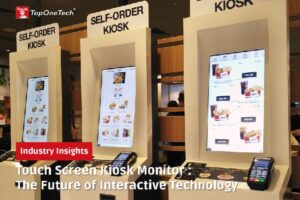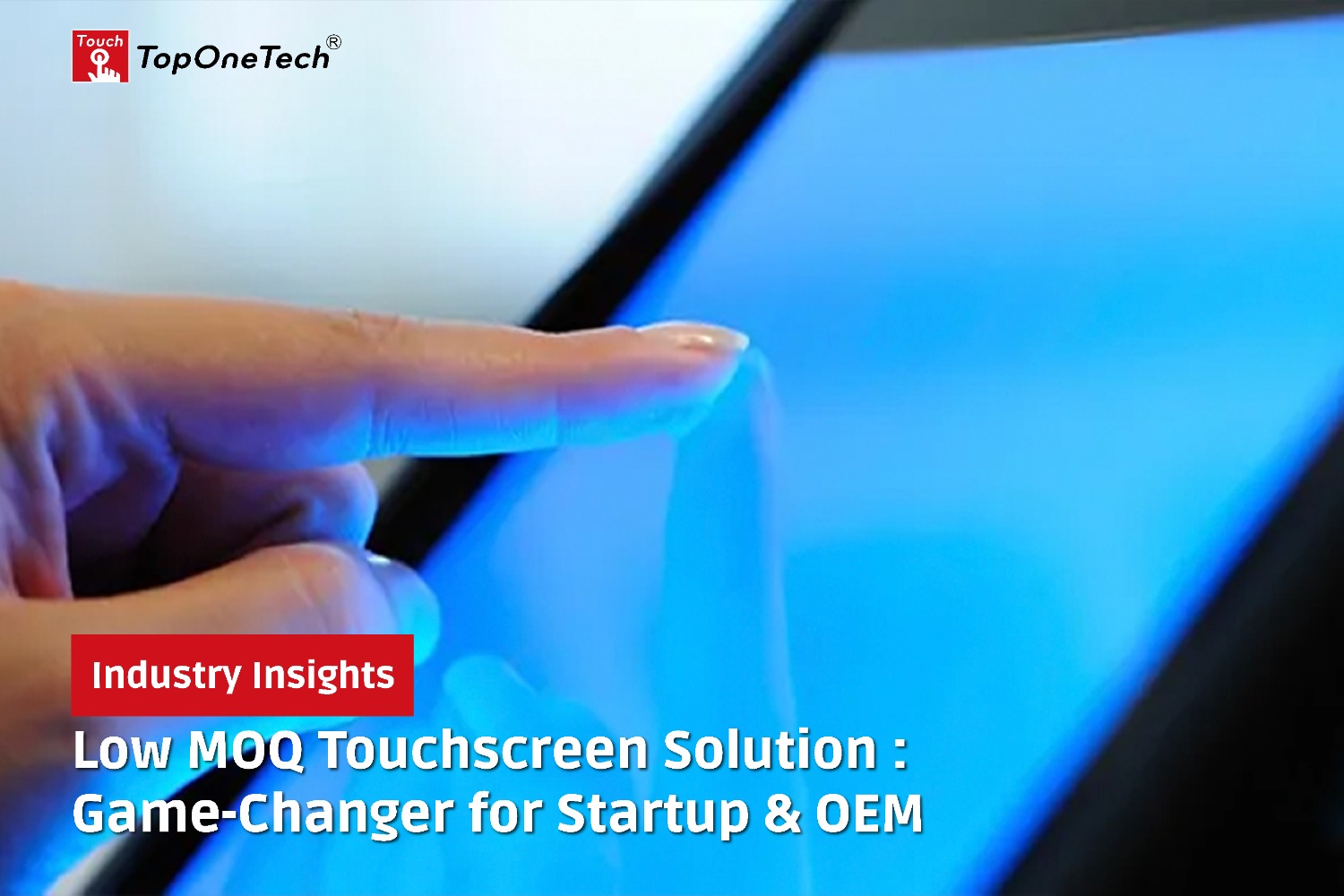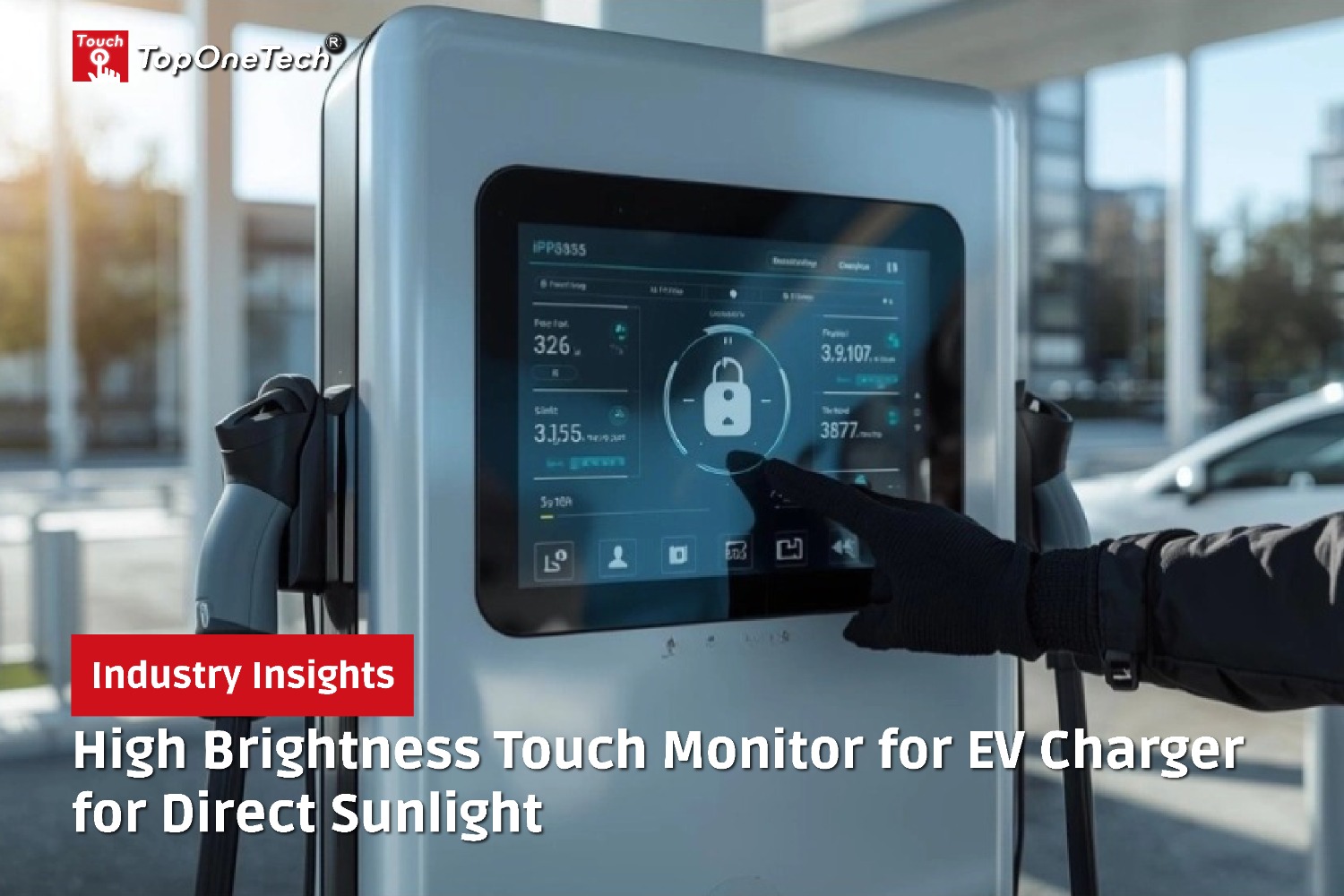
In today’s fast-paced world, businesses across all sectors are prioritizing efficiency, speed, and customer convenience. One technological advancement that embodies these qualities is the touch screen kiosk monitor. From airports to retail stores, hospitals to hotels, these devices have become increasingly common, providing users with an interactive, intuitive, and self-service platform. Whether it’s for making purchases, checking information, or navigating through services, touch screen kiosks are shaping the future of customer experience and business operations.
This article dives deep into the world of touch screen kiosk monitors—exploring their various applications, key benefits, and why they’re rapidly becoming a must-have in diverse industries.
What is a Touch Screen Kiosk Monitor?
A touch screen kiosk monitor is an interactive display system that allows users to engage directly with digital content using touch input, eliminating the need for physical buttons or a keyboard. These monitors are often integrated into self-service kiosks, enabling users to perform a wide range of tasks such as making transactions, accessing information, or interacting with services.
Touch screen kiosk monitors come in various sizes and designs to suit different environments and functions, and they are equipped with features such as high-definition displays, responsive touch technology, and durable materials to withstand high usage in public spaces.
Common Features of Touch Screen Kiosk Monitors:
- Multi-touch capability for intuitive navigation
- High durability for use in high-traffic areas
- Anti-glare screens for outdoor usage
- Customizable interfaces to suit business needs
- Cloud connectivity for real-time updates
Applications of Touch Screen Kiosk Monitors Across Industries
The versatility of touch screen kiosks has made them valuable across numerous industries. Below are some key sectors where these monitors are having a transformative impact:
1. Retail: Enhancing Customer Shopping Experiences
In retail, touch screen kiosks streamline the shopping experience by providing customers with a self-service platform where they can browse products, check prices, or even complete purchases. These kiosks serve as interactive catalogs, allowing retailers to display more products than could fit on physical shelves. By integrating payment systems, kiosks can also facilitate quick and easy transactions, reducing the need for cashiers and improving customer satisfaction.
2. Healthcare: Improving Patient Check-ins and Information Access
Touch screen kiosks are becoming essential tools in healthcare settings, where efficiency and accuracy are crucial. Patients can use kiosks to check in for appointments, update their medical records, or pay their bills. Hospitals and clinics are also using kiosks to provide patients with real-time information on waiting times, doctors’ schedules, and directions to departments, reducing staff workloads and enhancing the patient experience.
3. Hospitality: Streamlining Guest Services
In hotels and restaurants, touch screen kiosks help streamline services such as check-ins, reservations, and orders. Guests can use kiosks to check into their rooms without the need for front-desk staff, or to place food orders that go directly to the kitchen. These features not only speed up service but also offer guests a more personalized experience by allowing them to control their interactions.
4. Transportation: Enhancing Passenger Experience
Airports, train stations, and bus terminals are high-traffic environments where efficiency is vital. Touch screen kiosks assist travelers in booking tickets, checking in for flights, and even printing boarding passes. These kiosks have been designed to handle large volumes of users, offering multilingual support, real-time updates, and robust security features for payment processing.
5. Government Services: Simplifying Citizen Interaction
Government institutions are increasingly adopting touch screen kiosks to manage queues, provide information, and process payments for services such as renewing driver’s licenses or paying utility bills. By offering a user-friendly interface, these kiosks minimize the need for face-to-face interactions, reduce waiting times, and improve service delivery efficiency.
Benefits of Touch Screen Kiosk Monitors for Businesses
Adopting touch screen kiosk monitors can provide businesses with a multitude of benefits, making them a worthy investment across industries.
1. Improved Customer Experience
One of the most significant advantages of touch screen kiosks is the improved customer experience they offer. Moreover, by empowering users to interact with a digital interface at their convenience, businesses can provide faster service, reduce wait times, and eliminate the need for staff intervention in many tasks.
2. Increased Efficiency
By automating routine processes such as ticket purchases, order placements, and information retrieval, touch screen kiosks enable businesses to operate more efficiently. This not only reduces labor costs but also allows staff to focus on more complex customer service tasks.
3. 24/7 Availability
Unlike human employees, touch screen kiosks can operate around the clock, offering businesses the opportunity to provide uninterrupted service to customers. Whether in a hospital, hotel, or transportation hub, this ensures that users can access services whenever they need them.
4. Data Collection and Analytics
Touch screen kiosks can collect valuable data on user behavior, preferences, and service usage. Moreover, this data can be used to improve business operations, personalize services, and develop targeted marketing strategies.
5. Cost-Effective
Although the initial investment in touch screen kiosks may be high, the long-term cost savings are significant. With reduced staffing needs, faster service delivery, and less human error, businesses can quickly recoup their investment while improving service quality.
Key Considerations When Choosing a Touch Screen Kiosk Monitor
Selecting the right touch screen kiosk monitor is crucial to ensuring that it meets the specific needs of your business and users. Moreover, here are some key factors to consider:
1. Screen Size and Resolution
The size of the touch screen is vital depending on the type of interaction it’s designed for. Larger screens may be more suitable for kiosks displaying complex information, while smaller screens work well for simple transactions. High-resolution displays are essential for clear visuals, especially in environments with a lot of digital content.
2. Durability and Protection
Kiosks in public spaces need to be durable and resistant to potential damage from frequent use. Opt for touch screens with reinforced glass, anti-scratch, and anti-glare features, particularly for outdoor applications.
3. Interface Customization
A customizable interface ensures that your touch screen kiosk can be tailored to match the unique needs of your business and your users. Moreover, from design layouts to language options, a user-friendly interface makes a significant difference in the kiosk’s usability.
4. Connectivity and Software Integration
For seamless operation, kiosks must be equipped with reliable connectivity options (Wi-Fi, Ethernet) and compatible software that integrates with existing business systems, such as payment gateways, customer databases, or inventory management systems.
5. Maintenance and Support
Even the most advanced kiosks require routine maintenance to ensure optimal performance. Choose a kiosk provider that offers comprehensive support, including software updates, troubleshooting, and replacement parts.
Maintaining Touch Screen Kiosk Monitors: Best Practices
To maximize the longevity and performance of touch screen kiosk monitors, regular maintenance is essential. Here are some best practices:
1. Routine Cleaning
Fingerprints and smudges can accumulate on the kiosk’s touch screen, reducing its responsiveness and aesthetic appeal. Use a microfiber cloth and gentle cleaning solutions to keep the screen clean.
2. Software Updates
Regular software updates ensure that the kiosk’s system remains secure and functional. These updates also allow for new features and improvements to be added over time.
3. Hardware Checks
Periodic hardware checks can identify any signs of wear and tear, such as loose cables or damaged touch sensors. Furthermore, addressing these issues promptly ensures that the kiosk remains in good working condition.
The Future of Touch Screen Kiosk Monitors
As technology continues to evolve, touch screen kiosk monitors will become even more advanced, incorporating AI, voice recognition, and facial recognition for enhanced user experiences. These innovations will allow for even more personalized and efficient interactions, transforming how businesses operate and customers engage with services.
Industries such as retail, healthcare, hospitality, and transportation will continue to benefit from these advancements, making touch screen kiosks an indispensable part of the future digital landscape.
Conclusion
In conclusion, touch screen kiosk monitors are revolutionizing the way businesses operate, offering a multitude of benefits including improved customer experience, increased efficiency, and cost savings. Moreover, with their growing application across various industries, these devices are quickly becoming a cornerstone of modern business solutions. Whether you’re looking to streamline operations in retail, healthcare, or hospitality, investing in touch screen kiosk technology can provide a competitive edge in today’s digital world.
Top One Tech can customize touch monitor for your self-service kiosk and we can also customize the self-service kiosk, crafted by our subsidiary company, Top One Tech Metal, specially made for your application scenarios.
Don’t hesitate to contact us for further assistance :
Whatsapp/Call us at : +86 13631610695
Email : sales@toponetech.cn
See Also : Our Wide Range of Touch Monitor Products




